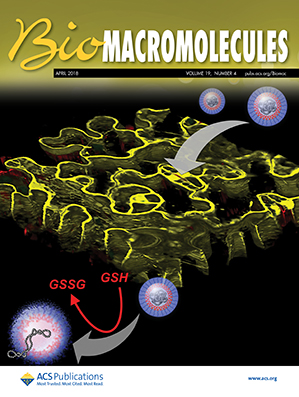3D Bioprinted ImmunomodulationThe Advancing Landscape of Next-Generation Immuno-oncology
IF 5.4
2区 化学
Q1 BIOCHEMISTRY & MOLECULAR BIOLOGY
引用次数: 0
Abstract
Tumor microenvironment (TME) alteration can lead to tumorigenesis, where tumors evade the immune system and spread. Thus, immunomodulation inside the TME may be a useful therapeutic approach. In this regard, bioprinting has become a potential technique for developing therapeutic solutions that offer improved control over immune modulation. Through the use of novel immune cell therapies and realistic tumor models, it provides a platform for advancing cancer immunotherapy. By examining the complex mechanisms of immunomodulation in tumorigenesis, this review article clarifies how interactions between the immune system and the tumor microenvironment affect the initiation and spread of cancer. Additionally, the effectiveness of 3D bioprinting in modulating and activating immune cells, such as T cells, dendritic cells, and macrophages, has also been analyzed. A summary of current research shows the pivotal role of 3D bioprinting in establishing a solid foundation for advancing anticancer studies and revolutionizing cancer treatment through immunotherapeutic strategies.
- Download: Download high-res image (56KB)
- Download: Download full-size image
生物3D打印免疫调节──新一代免疫肿瘤学的发展前景。
肿瘤微环境(TME)改变可导致肿瘤发生,肿瘤逃避免疫系统并扩散。因此,TME内的免疫调节可能是一种有用的治疗方法。在这方面,生物打印已经成为开发治疗解决方案的潜在技术,可以改善对免疫调节的控制。通过使用新的免疫细胞疗法和真实的肿瘤模型,它为推进癌症免疫治疗提供了一个平台。通过研究肿瘤发生过程中免疫调节的复杂机制,本文综述了免疫系统和肿瘤微环境之间的相互作用如何影响肿瘤的发生和扩散。此外,3D生物打印在调节和激活免疫细胞(如T细胞、树突状细胞和巨噬细胞)方面的有效性也得到了分析。目前的研究总结表明,3D生物打印在为推进抗癌研究和通过免疫治疗策略革新癌症治疗奠定坚实基础方面发挥着关键作用。
本文章由计算机程序翻译,如有差异,请以英文原文为准。
求助全文
约1分钟内获得全文
求助全文
来源期刊

Biomacromolecules
化学-高分子科学
CiteScore
10.60
自引率
4.80%
发文量
417
审稿时长
1.6 months
期刊介绍:
Biomacromolecules is a leading forum for the dissemination of cutting-edge research at the interface of polymer science and biology. Submissions to Biomacromolecules should contain strong elements of innovation in terms of macromolecular design, synthesis and characterization, or in the application of polymer materials to biology and medicine.
Topics covered by Biomacromolecules include, but are not exclusively limited to: sustainable polymers, polymers based on natural and renewable resources, degradable polymers, polymer conjugates, polymeric drugs, polymers in biocatalysis, biomacromolecular assembly, biomimetic polymers, polymer-biomineral hybrids, biomimetic-polymer processing, polymer recycling, bioactive polymer surfaces, original polymer design for biomedical applications such as immunotherapy, drug delivery, gene delivery, antimicrobial applications, diagnostic imaging and biosensing, polymers in tissue engineering and regenerative medicine, polymeric scaffolds and hydrogels for cell culture and delivery.
 求助内容:
求助内容: 应助结果提醒方式:
应助结果提醒方式:


